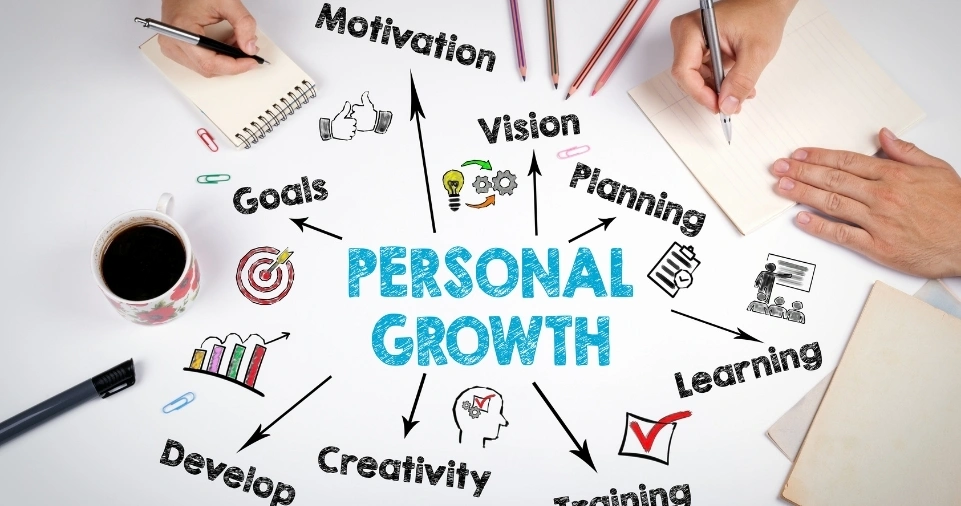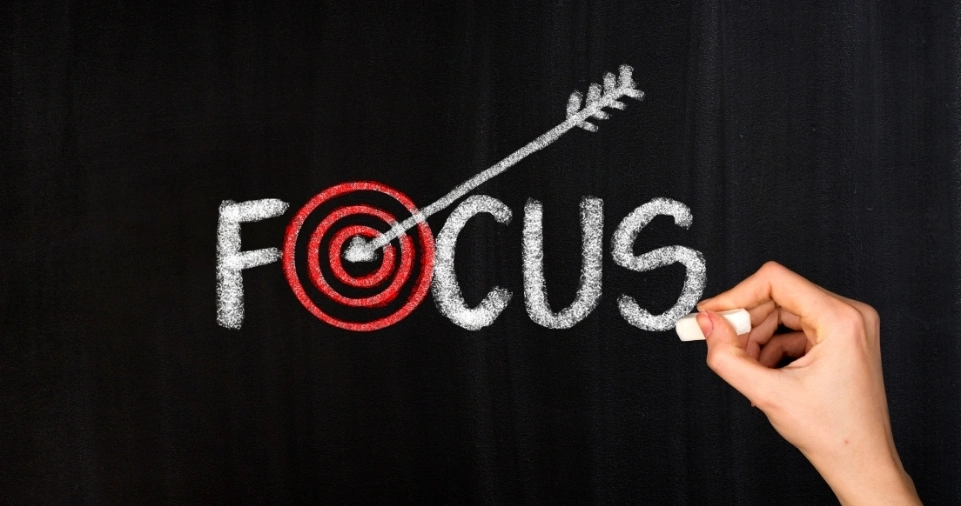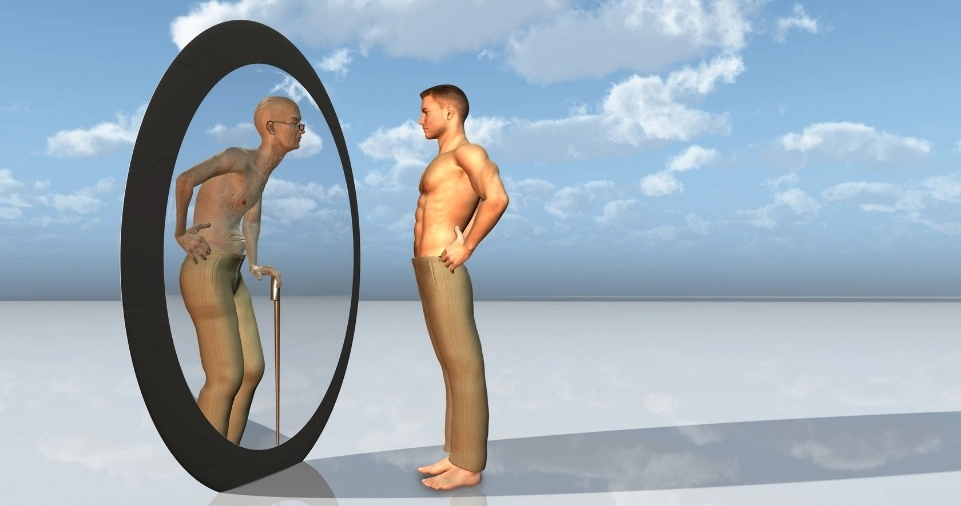I’ll never forget the morning I realized I was living a life that looked perfect on paper but felt completely empty inside. At 28, with a decent job and good friends around me, I should have been happy. Instead, I felt stuck in a comfortable routine that was slowly draining my soul. That wake-up call forced me to examine what real personal growth actually means—and it wasn’t what I expected.
Most advice about self-improvement misses the point entirely. People think growth is about adding more—more goals, more habits, more productivity hacks. But what I discovered through years of coaching others and transforming my own life is that personal growth starts with subtraction. You need to remove the layers of self-doubt, false beliefs, and outdated versions of yourself before you can become anything better. This journey isn’t about following someone else’s blueprint; it’s about creating your own path through honest self-discovery.
Why Most People Stay Stuck Without Realizing It
The biggest lie we tell ourselves is that being comfortable equals being content. I’ve watched countless people coast through their 30s and beyond, never questioning whether they’re truly living or just existing. The truth is, your brain is wired to keep you safe, not to make you happy. That comfort zone you’re sitting in? It’s actually a danger zone for your potential. Every day you avoid taking steps toward change, you’re making an active choice to settle for less than you’re capable of achieving.
Real personal development requires you to examine the uncomfortable truth about where you are versus where you want to be. This isn’t about self-improvement as some trendy hobby—it’s about recognizing that stagnant water breeds nothing but decay. When you stop growing, you start dying, even if you’re still breathing. The wake-up call usually comes in the form of a crisis, but why wait for disaster to force your hand?
The Four Dimensions Nobody Talks About Properly
Everyone discusses mental, physical, emotional, and spiritual areas of growth, but they treat them like separate boxes to check. That’s backwards. These four areas are interconnected systems, not isolated projects. When I work with clients, we don’t focus on improving one aspect while ignoring the others—we look at how mental blocks create physical tension, how emotional wounds affect spiritual connection, how physical health impacts mental clarity.
Here’s what actually works: take an honest look at each dimension and rate yourself on that 1-10 scale everyone mentions. But don’t stop there. Ask yourself: “Which area is the load-bearing wall holding up my entire structure?” That’s where you start. Not because it’s easiest, but because when that foundation strengthens, everything else naturally elevates. I’ve seen people transform their entire lives by addressing the one crucial area they’d been avoiding for years.
Why Your Thinking Is Sabotaging Everything

Your mindset isn’t just important—it’s everything. But here’s what the self-improvement industry won’t tell you: a growth mindset isn’t something you develop through positive affirmations and vision boards. It’s forged through deliberately placing yourself in situations where you might fail. Every time you think “I’m not ready,” “I don’t know enough,” or “maybe next year,” you’re reinforcing the exact neural pathways that keep you stuck.
I learned this the hard way. For years, I tried to think my way into confidence, reading every book about mindset I could find. Nothing changed until I started acting despite my thoughts. Want to develop a real growth mindset? Stop waiting to feel differently before you act differently. The change in thinking follows the change in behavior, not the other way around. Try something small that scares you today—not tomorrow, not when you’re ready, but right now while you’re still afraid.
The Comfort Addiction Nobody Admits They Have

Let’s be brutally honest: you’re addicted to comfort, and it’s killing your potential. We’ve created entire lives designed to minimize discomfort, and then we wonder why we feel so unfulfilled. Your comfort zone isn’t a cozy blanket—it’s a cage you’ve decorated so nicely that you’ve forgotten you’re trapped. The fear of stepping outside that zone feels dangerous because your brain interprets any unknown as a threat to survival.
But here’s the paradox: real danger lies in staying comfortable. The world doesn’t reward those who avoid challenges; it rewards those who embrace discomfort as the price of growth. Every successful person you admire has one thing in common—they got comfortable being uncomfortable. They learned to take steps into uncertainty without knowing the outcome. Start by doing one thing every day that makes you slightly uncomfortable. Not reckless, just uncomfortable. That’s your growth zone, and it’s where actual transformation happens.
The Failure Paradox That Changes Everything

Society has programmed you to fear failure, but that fear is what guarantees you’ll fail at life. The most successful people aren’t those who never fail—they’re the ones who fail faster and learn more efficiently. Failure isn’t the opposite of success; it’s the raw material success is built from. Every mistake contains a lesson, every setback reveals a weakness to strengthen, every fall teaches you how to get back up with more wisdom.
I’ve failed at more things than most people try in a lifetime. Business ventures that collapsed, relationships that ended badly, goals I never achieved. But each failure eliminated a path that wouldn’t work, bringing me closer to what would. The real failure isn’t falling down—it’s refusing to take the next step because you might fall again. Embrace this truth: you will fail, probably many times. The only question is whether you’ll let that fear paralyze you or propel you forward.
Why Goal-Setting Fails for Most People

Everyone sets goals, yet most people never achieve them. Why? Because they set vague aspirations and call them goals. “I want to be better” isn’t a goal—it’s a wish. SMART goals work not because they’re trendy but because they force specificity. When you define exactly what you want, by when, and why it matters, you transform fantasy into achievable reality.
But here’s what most goal-setting advice misses: the why behind your goal matters more than the what. If your goals are based on what you think you should want—the promotion, the income, the image—you’ll sabotage yourself at every turn. Your subconscious knows when you’re chasing someone else’s dreams. Setting clear goals that align with your authentic values creates a magnetic pull toward success rather than a draining push against resistance.
Break down every big goal into small, almost stupidly simple steps. Not because you’re incapable of more, but because momentum matters more than magnitude. One small step completed beats ten giant steps planned but never taken. Each step forward builds confidence, and confidence fuels the next step. That’s how you create an unstoppable cycle of progress instead of an exhausting cycle of starting and quitting.
Creating Your Personal Blueprint

A plan without action is just a fantasy, but action without a plan is chaos. You need both. Here’s the secret nobody tells you: your personal growth plan isn’t meant to be perfect—it’s meant to be adjustable. Most people spend months creating the perfect plan and then quit when life throws them a curveball. Smart people create a flexible framework and adjust as they learn what actually works for them.
Write down your vision for each of those four areas of life—mental, emotional, physical, spiritual. Now identify what resources or tools you need for each. Maybe it’s books, courses, a coach, or just dedicated time. The key is knowing what next step to take when you wake up each morning. When everything is mapped out, you eliminate decision fatigue and resistance before they can stop you.
Remember, your plan serves you—you don’t serve your plan. If something isn’t working, change it. If you discover a better path, take it. Flexibility within structure is the formula for sustainable growth. Rigidity breaks under pressure; adaptability bends and strengthens.
Discovering What Actually Drives You

Most people are chasing goals that don’t even belong to them. They want what they think they should want based on social media, family expectations, or societal pressure. Real self-discovery means stripping away all those external voices and asking: “What makes me feel truly alive?” Not what looks impressive, not what others approve of—what lights you up from the inside.
I spent years trying to figure out what I was passionate about by thinking about it. Then I realized you don’t discover passion through contemplation—you discover it through experimentation. Try things, especially things you’ve never considered. Pay attention not just to what you enjoy, but to what makes you lose track of time. That’s where your purpose lives—at the intersection of what you love doing and what the world needs.
Your strengths aren’t always what you’re good at—sometimes they’re what you’re passionate about improving. Ask yourself these questions honestly: What would I do if failure wasn’t possible? What would I pursue if money wasn’t a factor? What do I want my life to stand for? The answers reveal more about your true path than any personality test ever will.
The Power of Singular Focus

Modern life glorifies multitasking, but neuroscience proves it’s a myth. Your brain can only focus deeply on one thing at a time. When you try to improve everything simultaneously, you improve nothing substantially. This is why I tell clients: focus on growing in one area intensely before moving to the next. Not because you can’t handle complexity, but because depth beats width every time.
Choose the one area where change would create the biggest ripple effect across your entire life. Maybe physical health—when you improve that, your mental clarity and emotional stability often improve automatically. Or perhaps emotional healing—resolving past wounds can unlock mental capacity and spiritual connection you didn’t know you had. The rising tide principle is real: elevate one dimension properly, and the others naturally follow.
Give yourself permission to say no to everything that doesn’t serve your primary focus right now. This isn’t selfish; it’s strategic. You’re not abandoning other areas—you’re building a foundation strong enough to support them all eventually.
Fighting The Invisible Enemy

Resistance shows up differently for everyone, but it always shows up. For some, it’s laziness. For others, it’s perfectionism. For many, its fear disguised as rationality—”I don’t have enough time,” “I need to research more,” “I’ll start when conditions are perfect.” These are lies resistance tells to keep you stuck. The voice in your head that says “maybe tomorrow” or “you’re not ready” isn’t wisdom—it’s resistance protecting your ego from potential failure.
The best weapon against resistance? Action. Not massive action, just any action. Resistance dissolves the moment you start moving. It feeds on hesitation and dies from momentum. When you feel that familiar pull to avoid, procrastinate, or quit, recognize it for what it is: resistance doing its job. Thank it for trying to protect you, then do the thing anyway. Every time you work through resistance, you weaken its hold on your life.
Universal Laws That Govern Growth
Some principles are universal, regardless of your specific goals or circumstances. Consistency beats intensity every time—small, consistent effort compounds into massive results over time. Feedback is essential because you can’t improve what you don’t measure. Mindset matters because your beliefs shape your actions, which create your results. These aren’t just nice ideas; they’re laws as reliable as gravity.
The Law of Continuous Learning means you never graduate from growth. The moment you think you’ve learned enough is the moment you start declining. Stay curious like your life depends on it—because your quality of life actually does. Read, listen, ask questions, challenge your assumptions. Every day offers lessons if you’re paying attention.
The Law of Self-Discipline is simple but not easy: do what needs doing, when it needs doing, whether you feel like it or not. Motivation is unreliable; discipline is what separates dreamers from achievers. Take responsibility for your results, good or bad. Own your choices and their consequences. That ownership is the foundation of all personal power.
Recognizing Where You Are in the Process
Growth isn’t linear—it’s cyclical. You’ll move through phases of rapid progress, frustrating plateaus, and occasional setbacks. Understanding this prevents the mistakes most people make: quitting during plateaus or becoming overconfident during peaks. Awareness of these phases helps you respond appropriately instead of reacting emotionally.
The Awareness phase is recognizing something needs to change. The Commitment phase is deciding to actually change it. Implementation is where most people struggle—turning decisions into consistent action. Evaluation is continuously assessing what’s working and adjusting what isn’t. You’ll cycle through these phases multiple times, and each cycle teaches you something new.
Embrace the process even when it feels overwhelming. The discomfort you feel during transition isn’t a sign you’re doing it wrong—it’s proof you’re doing something real. Challenges and setbacks aren’t obstacles to your growth; they’re the actual substance of it.
Practical Tools That Actually Work
Techniques without understanding are just gimmicks, but when you combine method with meaning, you unlock real transformation. Visualization works not because it’s magical, but because your brain rehearses success before your body attempts it. Journaling works because externalizing thoughts creates clarity impossible to achieve in your head alone. Time-blocking works because it respects the truth that energy management matters more than time management.
The systematic approach means creating a personal development plan with specific actionable steps, not vague intentions. Implement daily habits that align with your goals—habits are the compound interest of self-improvement. Track your progress objectively because what gets measured gets improved. Seek accountability through a mentor or coach who will call out your excuses and celebrate your wins.
Don’t collect tools and techniques like trophies. Find what works for you through experimentation, then work those tools consistently until they produce results. One technique applied with discipline beats a hundred techniques dabbled in sporadically.
The Gratitude Advantage
Gratitude isn’t just feel-good fluff—it’s a performance enhancer backed by neuroscience. Your brain can’t simultaneously focus on what’s wrong and what you appreciate. When you practice gratitude, you’re literally rewiring your neural pathways toward noticing opportunity instead of obstacle. This isn’t about toxic positivity or ignoring problems—it’s about training your attention on what’s working so you can build from strength.
Start stupidly small. Every day, notice three things you’re grateful for. Not grand achievements—little things. The coffee that tastes good. The person who smiled at you. The fact that you woke up with another day to try again. This simple practice literally changes your brain chemistry over time, making you more resilient, more present, and more capable of handling challenges.
The biggest difference between people who thrive and people who merely survive often comes down to perspective. Two people face the same challenges; one sees tragedy, the other sees lessons. Gratitude training is perspective training—it doesn’t change what happens to you, but it radically changes how you experience and respond to what happens.
Building Your Resource Library
The right tools and resources accelerate your journey, but the wrong ones waste time and create confusion. Books remain one of the most powerful resources because they condense years of experience into hours of reading. But don’t just consume—apply. One book fully implemented beats ten books merely read.
Podcasts offer convenient learning during commutes or workouts. YouTube videos provide visual learning for those who process information that way. Courses give structured paths when you need expert guidance. Workshops and conferences offer immersive experiences and valuable networking. Retreats provide space away from daily life to focus intensely on growth.
The key is matching the resource to your learning style and current needs. Don’t hoard tools—use them. Quality trumps quantity. Find the resources that actually change how you think and act, then go deep with those rather than collecting endless materials you never apply.
Documenting Your Transformation
A journal isn’t a diary—it’s a tool for self-awareness and accountability. When you write about your experiences, goals, and challenges, you create external perspective on internal processes. Patterns emerge that you’d never notice otherwise. You can track your progress objectively instead of relying on faulty memory and emotion.
Keeping a self-improvement journal serves multiple purposes: it celebrates your wins so you see progress even when growth feels slow, it captures lessons from failures so you don’t repeat mistakes, it clarifies your thinking when challenges feel overwhelming, and it holds you accountable to the commitments you’ve made to yourself. The act of writing forces clarity that thinking alone can’t achieve.
Don’t overthink the format—simple beats perfect. Write what worked, what didn’t, what you learned, and what you’ll try next. That’s it. This practice becomes your personal growth database; a resource uniquely tailored to your journey that no generic advice can match.
Making It Non-Negotiable
Growth can’t be something you do when you feel like it—it must become part of your identity. The difference between people who transform and people who try and quit is simple: one makes it part of their routine, the other treats it as optional. Your daily actions reveal your real priorities, regardless of what you claim to value.
Find ways to integrate growth practices into existing routines. Listen to audiobooks during your commute. Journal with your morning coffee. Learn something new during lunch breaks. The 1% improvement principle is real: tiny changes compounded daily create extraordinary results over time. You don’t need dramatic overhauls—you need consistent, small upgrades that become automatic.
The goal isn’t perfection; it’s progression. You’ll miss days, fall back into old patterns, struggle to maintain momentum. That’s normal. What matters is that you return to the practice quickly rather than waiting for motivation to return. Discipline means doing it anyway, especially when you don’t want to.
When You Need Expert Guidance
There’s no shame in seeking support—in fact, it’s one of the smartest investments you can make. A coach or therapist provides perspective you can’t achieve alone because you can’t see your blind spots from inside them. They help you recognize patterns, challenge limiting beliefs, and maintain accountability when your own motivation wanes.
I’ve hired coaches at multiple points in my journey, and every time the investment paid returns far beyond the cost. Not because they had secret knowledge, but because they asked the questions I needed to answer but didn’t know to ask myself. They held up a mirror that showed me both my potential and the obstacles I was putting in my own way.
If you’re struggling with depression, anxiety, or past trauma, a therapist or counselor isn’t optional—it’s essential. Mental and emotional health are foundations everything else rests on. Seek professional help without hesitation or shame. The strongest people aren’t those who never struggle; they’re the ones who reach out when they need help instead of suffering alone.
Escaping The Perfection Prison
Self-improvement syndrome is real—the constant feeling that you’re never good enough, always chasing the next level without celebrating where you are. This relentless pursuit of perfection leads to burnout, not breakthrough. You start improvement to feel better about yourself, but it becomes another source of inadequacy when you can’t meet impossible standards.
The balance between drive and self-acceptance is delicate but crucial. Yes, push yourself to grow. Yes, maintain high standards. But also recognize that you’re already enough while simultaneously becoming more. These aren’t contradictory—they’re complementary. You can appreciate your current self while working toward your future self.
Taking breaks isn’t weakness; it’s wisdom. Celebrating progress, even small wins, fuels motivation better than constant criticism. Enjoying the journey matters because the destination keeps moving anyway. There’s always another goal, another level, another challenge. If you can’t find satisfaction in the process, you’ll never find it in the outcome.
Building Unshakeable Self-Worth

Self-esteem, self-worth, and self-confidence are related but distinct. Self-esteem is how you feel about yourself. Self-worth is your inherent value as a person. Self-confidence is belief in your abilities. Most people work on confidence through achievement, but that’s backwards. Real confidence flows from self-worth, which isn’t earned—it simply is.
You are valuable not because of what you achieve, but because you exist. This isn’t fluffy philosophy—it’s the foundation of mental health. When your worth depends on external validation, you become a slave to others’ opinions. When you recognize your inherent worth, achievement becomes expression rather than desperate pursuit of value.
Challenge every negative thought that attacks your worth. Practice self-compassion when you fail or struggle—treat yourself with the kindness you’d offer a friend. Set goals to express your potential, not to prove your value. Learn to say no to protect your time and energy. Surround yourself with people who uplift rather than diminish you. These aren’t luxuries; they’re necessities for healthy self-worth.
Developing Real Confidence

Confidence isn’t something you’re born with—it’s built through repeated action despite fear. Every time you try something scary and survive, your brain recalibrates what’s possible. Every time you set a goal and achieve it, you build evidence that you’re capable. Confidence is simply accumulated proof that you can handle challenges.
Set achievable goals deliberately—not so easy they’re meaningless, but not so hard they guarantee failure. Each completed goal, no matter how small, reinforces your belief in your abilities. String enough small wins together, and suddenly big challenges don’t seem impossible anymore. This is the confidence ladder: climb one rung at a time, always stretching slightly beyond your current capacity.
Learn new skills actively because competence breeds confidence. The more you can do, the less you fear the unknown. Practice assertiveness by expressing your needs clearly and setting boundaries firmly. Stand up for yourself not aggressively, but consistently. Each time you assert yourself successfully, you prove to yourself that your voice matters and your needs are valid.
Real Examples from Real Lives
Personal growth looks different for everyone because we’re all starting from different places with different goals. For one person, growth might mean finally leaving a toxic job to start their own business. For another, it’s learning to set boundaries with family. For someone else, it’s overcoming addiction or healing from trauma. There’s no hierarchy of growth—all transformation is valid and valuable.
I’ve watched people transform their lives in radically different ways: the corporate executive who quit to become a yoga instructor, the stay-at-home parent who started a successful side-hustle, the college dropout who became a self-taught programmer, the retiree who finally pursued their artistic passion. What they all had in common wasn’t the specific path—it was the courage to try something that mattered to them despite fear and uncertainty.
Your transformation doesn’t need to be dramatic to be meaningful. Going for that promotion matters. So does learning a new skill, improving a relationship, or simply becoming more present in your daily life. Don’t compare your journey to anyone else’s. The only question that matters is: are you better today than yesterday? If yes, you’re succeeding.
Taking Action Despite Fear
Here’s the hard truth nobody wants to hear: you already know what you need to do. You’re not lacking information—you’re lacking action. All the reading, planning, and preparing in the world won’t change anything until you actually move. The timing will never be perfect. You’ll never feel completely ready. The conditions will never align just right. Successful people aren’t those who waited for perfect conditions—they’re the ones who acted despite imperfect conditions.
Fear is normal. Doubt is expected. Hesitation makes sense. But they can’t be reasons to avoid action—they must become reasons to act anyway. The person you want to become is on the other side of the fear you’re avoiding. Every time you wait for fear to subside before acting, you teach yourself that fear controls you. Every time you act despite fear, you prove to yourself that you’re stronger than your fear.
Start today. Not tomorrow, not next week, not when you feel more prepared. Identify one small step you can take right now toward the life you want. Then take it. That single step won’t transform your entire life, but it will start the momentum that can. And momentum, once started, becomes easier to maintain than to stop. You can follow BetterThisWorld.com for motivation in life and tips for mind growth and success.




